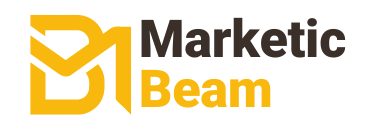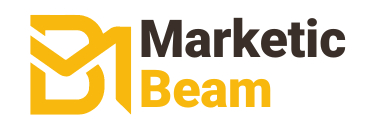SEO
17 Essential On-Page SEO Techniques For 2023
Published
1 year agoon
By
admin
On-page search engine optimization (SEO) is one of the most important things you can do to increase the visibility of your website in search results. It is a critical component of any SEO strategy.
It assists search engines in understanding your website’s content and determining its relevance and authority to specific search queries.
So, how do you go about it? In this post, we’ll look at the 15 best on-page SEO techniques for
- making your content more discoverable.
- improve user experience
- ultimately increasing traffic
Here are the top 17 on-page SEO techniques to help you rank higher in Google, Bing, and Yahoo.
1. Optimize your headlines
Keywords are the most crucial component of any SEO strategy. The first step in getting your website ranked on Google is to include keywords in your headline.
Make sure the words in your headline are relevant to the content of your article and can be found by people searching for those terms.
- Ensure that each page on your website has a unique title tag.
- Headlines should be between 50 and 60 characters long.
2. Optimize Meta descriptions
Meta descriptions are the short summaries that appear in search engine results. They are an important part of SEO because they influence how people choose which pages to click on.
If you don’t have meta descriptions, Google will pull its own from the text of your page. If it doesn’t find any, it will use a description that’s pulled from their index of web pages. That’s kind of like having no description at all.
Here are some page SEO techniques to help you optimize your meta descriptions:
- Make sure to include your target keyword as a phrase in your descriptions.
- Write it short – Meta descriptions do not have a strict character limit, but Google typically displays only around 155 to 160 characters in search results. This way they’ll be easy to read on mobile devices or in search results where space is limited.
- Make them attractive – Make sure they stimulate readers’ curiosity or interest and lure them in by describing the advantages they’ll receive.
3. Use header tags
The best way to optimize your site for on page SEO is to use header tags. These are tags that are added to the head of your HTML document, and they tell search engines what the most important content on your page is.
You can use a variety of header tags from H1 to H6, but we recommend using,
- H1 for the main title on a page,
- H2 for subheadings,
- H3 for sub-subheadings, and so on.
The more specific you get with your header tags, the more easily Google will be able to scan your website and know which parts of it are considered important.
4. Use clean and descriptive URLs
Your website’s URL is a very important part of your SEO strategy. An optimized URL helps search engines, visitors, and other users understand what content is on your page and how it fits into the rest of your website.
Here are some tips for creating clean and descriptive URLs:
- Use hyphens between words instead of underscores or dashes.
- Don’t use punctuation in the URL unless it’s part of the actual title.
- Use keywords in your URLs when possible.
5. Create Quality Content with keywords
When you’re creating content for the web, you need to keep in mind that search engines are looking for certain keywords.
These keywords can be words or phrases that your customers or potential customers might use when they search for what you have to offer.
The best way to make sure that you’re using these keywords is to create content around them.
When you do this, people will find it easier to find what they’re looking for and click on your site as a result. Your website will also be more likely to show up on the first page of search results because of this.
6. Keyword Density and Relevance
Keyword density refers to the number of times a keyword appears on a single web page, while relevance is a measure of how closely the content matches what users are searching for.
It is calculated by the number of times a keyword appears on a page divided by the total number of words.
The ideal keyword density for search engine optimization is 3% – 5%.
7. Use Internal Links
Internal linking is a great way to improve your site’s SEO and this links connect different pages on your site. This can be done by creating a navigational menu, adding breadcrumbs, or just linking between related articles and pages.
Make sure that when you use internal links, they are relevant and appropriate to the content they are linking to.
8. External linking
External linking is the process of linking to external websites or resources within your website. It helps Google understand how your website is related to other websites.
This can be done in many ways, including:
- Using text links
- Adding social media share buttons to your site
- Including relevant images in your content
9. Image optimization
Image optimization is a great way to increase the visibility of your content. It’s one of the most important SEO techniques that you can use. Images are not only a great way to add visual interest to your website, but they’re also an important part of your website’s user experience.
If you have images that aren’t optimized for search engines, they could be hurting your site’s rankings.
Here are some tips for making sure that your images are optimized:
- Make sure that the image file name includes relevant keywords
- Use descriptive alt text in each image tag so that your site visitors can more easily understand what they’re looking at
- Don’t use any graphics or photos that aren’t related directly to the content on your page. They may get picked up by Google as spammy links
10. Make Sure Your Site is Mobile Friendly
If you want to get your site noticed, you need to make sure it’s mobile-friendly.
According to Google, over 50% of all searches are performed on a mobile device. That means that if your site is not optimized for mobile users, you’re missing out on a huge amount of potential customers.
Is your web page mobile-friendly? You can use this google mobile-friendly test.
11. Use Schema Markup
Schema markup is a technique for optimizing your website for search engines.
It involves adding tags to your HTML code to provide more context about your content.
These tags, called schema tags or schema microdata, help search engines understand the meaning and context of your content.
By using schema markup, you can improve the way your website is displayed in search results and potentially increase traffic and search engine rankings.
12. Create a Sitemap
Creating a sitemap is an important step in optimizing your website for search engines. It’s a list of all the pages on your site, which helps search engines crawl and index your content. You can help search engines find all of your content by creating a sitemap.
You can create a sitemap using the XML Sitemap Generator tool at www.xml-sitemaps.com, or you can use Google’s tool at https://www.google.com/webmasters/tools/submit-sitemap/
13. Add Breadcrumbs to Your Navigation Menu
Breadcrumbs are a great way to add on-page SEO to your website. It is simple and effective, and they can help you achieve a higher page ranking in search results.
They’re also super easy to add to your website. Just add links in the head of your document to make sure that they’re visible on every page of your site.
14. Use social sharing buttons
Social sharing buttons are a great way to get people to share your content on social media, which can help with your page’s SEO.
If you place social sharing buttons on your blog posts or other pages, readers can share that content with their followers on Facebook, Twitter, LinkedIn, and other social media sites. This will boost the visibility of your website and help it rank higher in search engine results pages (SERPs).
15. Use responsive design
Responsive design means that the layout of your website will change based on the device being used to view it.
When someone visits your site on their phone, they’ll see something different than when viewing it on a desktop computer or tablet.
For example, if you have a lot of images on one page and then scroll down, users might have trouble seeing those images as they scroll because there’s not enough space for them on their screen.
By using responsive design, you can ensure that people see what they need to see when they’re viewing your site from any device!
16. Use a robots.txt file
A robots.txt file is a simple text file that you can create to tell search engines which pages on your site are not indexable and should be excluded from the search index.
The file allows you to control how search engine crawlers access your site’s content.
17. Use a fast loading speed
One of the best ways to do this is by making sure your website loads quickly.
If your website takes more than two seconds for the page to load, then people will think that it takes too long and they won’t stay on the page long enough for anything else to happen (like them purchasing something or signing up).
There are many ways to optimize your website speed,
- Choosing a theme that’s lightweight and optimized for performance
- Minimizing plugins and widgets that are not needed or used often enough to justify their load time
- Test your site in multiple browsers and on different devices.
- Use a content delivery network (CDN)
- Minimize HTTP Requests
Finally, We’ve covered a lot of ground in this article, but we hope you’ve found some good information to help you get started with on-page SEO.
On-page SEO is an important part of your overall search engine optimization strategy, so don’t forget to take these techniques into account when you’re creating SEO content or updating existing pages.
If you have any doubts, please feel free to ask us in the comments section below.







